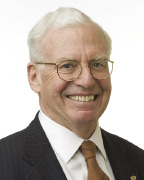Current construction, permitting and pipeline put the Boston metropolitan area in record setting territory for additions to supply in residential and commercial construction. The existing inventory is sustaining remarkable gains in rents and occupancy. The excess demand is recorded broadly and deeply. The scale and scope of new construction dominates first half 2013 inventory reports by the professional brokerage community.
Corporate expansions and relocations and new employers have headlined the Boston market for several months if not years. Institutional consolidation, expansion and relocation have accompanied the private sector activity during this period. Consistent job gains, population growth and household expansion have fueled demand. Existing commercial supply is recording rising occupancy and rents and other measures of excess demand. The interest rate environment has dramatically enhanced feasibility. Even rising construction costs are being reconciled with current pricing and outlook. We should not be surprised to see extraordinary additions to supply under construction, permitted and in the pipeline in all commercial property types and with broad geography.
The geography of new projects in the Boston metropolitan area includes dense mixed use megaplexes, mega blocks and mega buildings in the core neighborhoods and mixed use planned unit development clusters in the suburbs. Boston's Seaport and Fenway neighborhoods are well established and further expanding; East Boston, Roxbury, Chinatown, North Station, Theater District and Government Center are being transformed with projects breaking ground and permitted; South End, Alston Brighton, Back Bay and Beacon Hill are being infilled with nodal developments. Cambridge, Somerville, Malden and Medford are sites for major projects. Westwood, Waltham, Burlington and Quincy are under construction with major mixed use developments.
The scale, scope and clustering of the new developments will transform the competitive markets throughout the metropolitan area. Commentaries include aggregations of 11 million s/f in urban and suburban mixed use Pod's. Residential multifamily starts are upwards of 5,000 and permitted pipeline is upwards of 10,000 units. Transportation is a thematic overlay in all permitting and planning. Smart growth incentives have been provided to build at transportation nodes, accommodate bicycles and provide services and shopping. Building heights in downtown Boston are 40 and 50 stories. Multifamily tower complexes are several hundred units and commercial office projects are several hundred thousand square feet. These are transforming projects.
And hospitality, retail and healthcare properties are being expanded, permitted and planned as well. Markets are no longer easily read by analyzing the inventory. The outlook and the dynamics of transformative additions to supply demand scrutiny and creativity of the new nodes, neighborhoods and projects. The wrapups over the next few quarters will continue to be dominated by the unwrapping of new additions to supply.
David Kirk, CRE, MAI, FRICS is principal and founder of Kirk & Company, Real Estate Counselors, Boston.
Tags:
Boston is busy building: Construction, permitting and pipeline are in record setting territory
July 25, 2013 - Spotlights









.png)